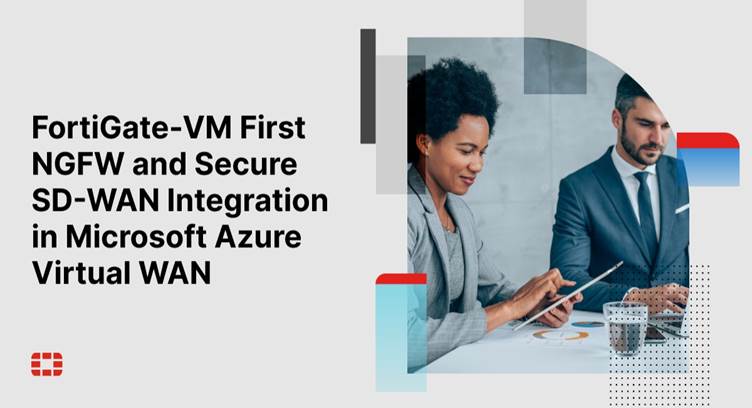Fortinet recently announced the expansion of its collaboration with Microsoft to deliver the industry’s first next-generation firewall (NGFW) and Secure SD-WAN integration with Microsoft Azure Virtual WAN.
Customers can now apply advanced security policies to virtual WAN traffic and extend Secure SD-WAN into the Azure virtual WAN hub.
The result is the convergence of advanced security and networking capabilities in the cloud for an even more simplified, automated, and secure cloud on-ramp and SD-WAN experience. The integration also allows enterprises to more effectively interconnect with applications and workloads running Azure with the rest of their hybrid and multi-cloud deployments.
Companies are increasingly looking to utilize Azure Virtual WAN as a global transit network architecture, providing seamless connectivity between endpoints. While Microsoft has long provided secure access to the Virtual WAN Hub, until now, it has been difficult to provide the same security policies with the same security tools within Azure Virtual WAN and across clouds and data centers. The integration of FortiGate-VM and Fortinet Secure SD-WAN into Azure Virtual WAN empowers organizations to achieve their desired digital innovation outcomes in the cloud while reducing complexity.
Earlier this month, Fortinet and Microsoft also announced the availability of FortiGate-VM integration with Azure gateway load-balancer, which enables customers to deliver superior experiences for applications and workloads running in Azure.
FortiGate-VM is one piece of the Fortinet Adaptive Cloud Security portfolio of products, services, and industry-leading threat intelligence built to empower customers to secure any application on any cloud. With flexible deployment options, broad integration, and centralized management and visibility, Security and DevOps teams are able to close cloud security gaps while alleviating security management burdens and supporting the rapid release of innovation. Leveraging the broad, integrated, and automated nature of the Fortinet Security Fabric, the industry’s highest-performing cybersecurity mesh platform, organizations gain consistent security posture, visibility, and enforcement through uniform security management across multi-cloud and hybrid environments.




















